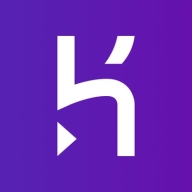


Find out what your peers are saying about Microsoft, Amazon Web Services (AWS), Red Hat and others in PaaS Clouds.
| Product | Market Share (%) |
|---|---|
| Red Hat OpenShift | 11.6% |
| Heroku | 3.4% |
| Virtuozzo Application Platform | 0.8% |
| Other | 84.2% |



| Company Size | Count |
|---|---|
| Small Business | 23 |
| Midsize Enterprise | 2 |
| Large Enterprise | 3 |
| Company Size | Count |
|---|---|
| Small Business | 17 |
| Midsize Enterprise | 4 |
| Large Enterprise | 40 |
| Company Size | Count |
|---|---|
| Small Business | 7 |
Established in 2007, Heroku is a cloud application platform providing a streamlined, efficient place for web app developers to create and deploy their applications. Heroku is designed to maximize developer productivity. With the entire web application development process available on the Herokucloud, creating and rolling out web apps has been made more efficient, convenient, and cost-effective than ever before.
Red Hat OpenShift offers a robust, scalable platform with strong security and automation, suitable for container orchestration, application deployment, and microservices architecture.
Designed to modernize applications by transitioning from legacy systems to cloud-native environments, Red Hat OpenShift provides powerful CI/CD integration and Kubernetes compatibility. Its security features, multi-cloud support, and source-to-image functionality enhance deployment flexibility. While the GUI offers user-friendly navigation, users benefit from its cloud-agnostic nature and efficient lifecycle management. However, improvements are needed in documentation, configuration complexity, and integration with third-party platforms. Pricing and high resource demands can also be challenging for wider adoption.
What are the key features of Red Hat OpenShift?Red Hat OpenShift is strategically implemented for diverse industries focusing on container orchestration and application modernization. Organizations leverage it for migrating applications to cloud-native environments and managing CI/CD pipelines. Its functionality facilitates efficient resource management and microservices architecture adoption, supporting enterprise-level DevOps practices. Users employ it across cloud and on-premises platforms to drive performance improvements.
Your Platform as a Service solution for DevOps hosting!
An elastic, high performance PaaS solution for cloud and hosting providers. The easy way to sell cloud hosting to DevOps-focused SaaS companies.
Turnkey application hosting for DevOps.
Sell PaaS alongside your existing products. The Virtuozzo Application Platform runs on the infrastructure you have today – even virtualized in your cloud or hosting platform.
It makes DevOps hosting fast, easy and cost-effective – and with true consumption-based billing, it gives you a real competitive advantage over hyperscale clouds.
Platform as a Service opens up new markets for your business: you can sell hosting to any company that depends on DevOps for internal or customer-facing IT.